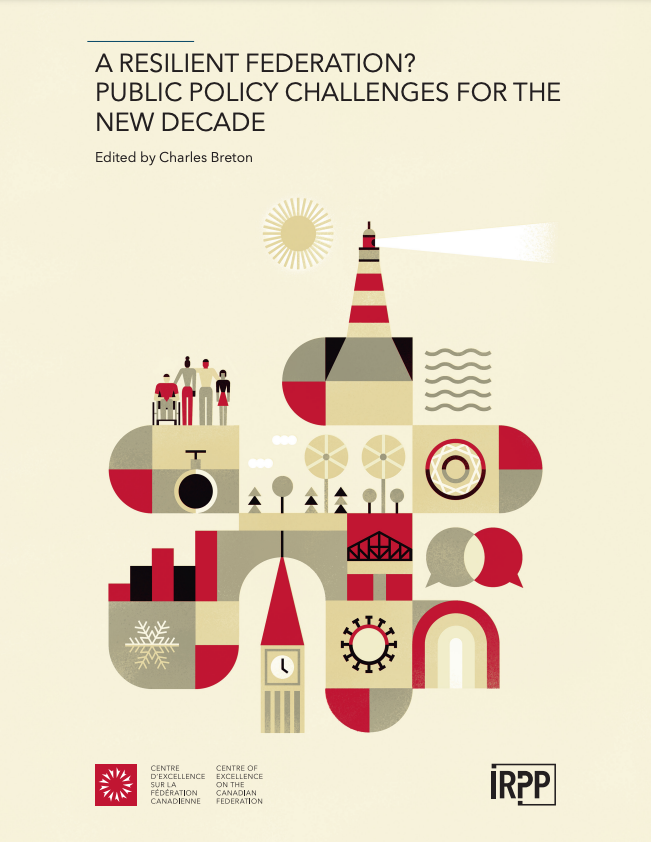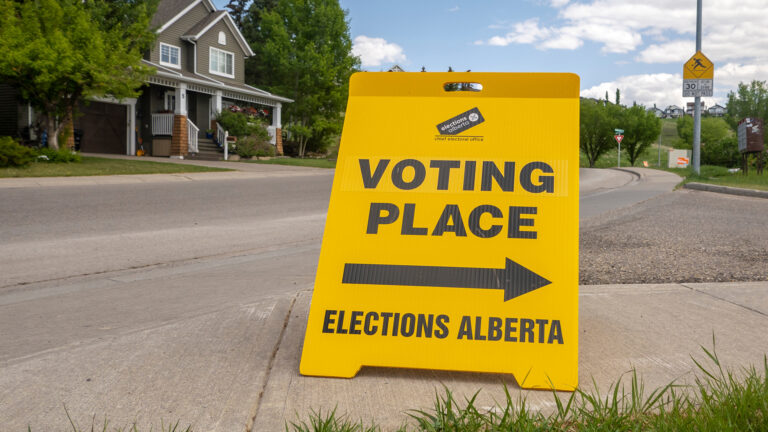Reconsidering the Constitutional Status of Municipalities: From Creatures of the Provinces to Provincial Constitutionalism
Introduction
A common refrain among Canadian political and legal analysts is that municipalities are “creatures of the provinces.” This odd and disparaging way of describing an order of government in the Canadian federation downplays the democratic and constitutional significance of municipalities. It disengages citizens from their municipal institutions and therefore lessens the scrutiny of municipal decisions and the accountability of municipal decision-makers.
The phrase also perpetuates the notion that municipalities are administrative arms of provincial governments. It downplays their fundamentally political nature. It implies that municipal responsibilities are unimportant local matters that require pragmatic, apolitical responses. The debate about systemic racism in policing is an obvious example of the political nature of municipal authority. Municipal laws and their enforcement also have enormous consequences for who wields power in cities. Although zoning formally regulates land use, it also governs people by indirectly controlling who can use land and for what purpose.[1] Municipal law-making could reflect and contribute to the inclusion of the diversity of urban populations in a variety of areas of jurisdiction that are fundamental to everyday life, such as property standards bylaws. However, they are not currently meeting this potential.[2]
A fundamental challenge in the Canadian federation is to realize the potential of municipal government by recognizing its democratic and constitutional significance. Canada needs to embrace the “federalism principle” in municipalities’ relationship with other orders of government. The Supreme Court of Canada recognized the “principle of federalism” as a “political and legal response to underlying social and political realities,” “inherent in the structure of our constitutional arrangements” and as a principle that “triumphed” over parts of the written constitution that appeared to contradict it, since such written elements were interpreted in its light.[3] Fully animating the federalism principle in Canada involves rethinking how to empower municipalities to govern local communities in ways that reflect their territorial diversity. It also requires thinking creatively about how to better link them to provincial and federal institutions as well as intergovernmental processes. I argue that the laws that establish and delegate power to municipalities (and create municipal systems) ought to be considered a particular kind of constitutional law — “organic statutes,” which are ordinary (unentrenched) statutes that are constitutional in subject matter and significance. In the British constitutional tradition, which is largely based on unwritten constitutional conventions, organic statutes are used to establish certain constitutional rules plainly and in writing; the term is meant to distinguish them from ordinary statutes in areas such as health and transportation policy. The authors of a The Canadian Regime, an influential textbook on the Canadian constitution, mention provincial human rights codes as an “illustrative example” of such organic statutes in Canada’s constitutional regime, which incorporates elements of both British and American constitutionalism. Human rights codes are unentrenched provincial statutes but by no means ordinary areas of policy since “they deal with fundamental rights such as equality and protection against discrimination.”[4] As systems that create rules for the division of power between two orders of government and for the establishment of legislative bodies (municipal councils), I argue that municipal systems are more similar to other “organic statutes” like provincial human rights codes than “ordinary statutes” that govern specific policy areas.[5] As such, they should be seen as unentrenched written elements of existing provincial constitutions. Furthermore, although provincial constitutions are distinct elements of the Canadian constitutional order, they exist within a broader constitutional context that places limitations on their actions and that is animated by underlying principles. As such, the provincial laws that establish municipal systems not only reflect and further important constitutional values in provinces but also the broader Constitution (for example, the principles of federalism and democracy discussed above). In other words, creating and altering a municipal act is of greater constitutional significance in a federation and constitutional order that values the federalism principle.
Since the Constitution Act, 1982, establishes that provinces can amend their constitutions unilaterally (with some important restrictions), provincial constitutions are a source of constitutional flexibility. Unlike the onerous amendment procedures applying to other parts of the federal Constitution, significant constitutional changes can be enacted through a simple majority vote. However, what is missing are mechanisms to protect municipalities against unilateral change by a provincial government, and to allow them greater authority over the governance of their own communities.
In this essay, I introduce the notion of manner and form limitations. These are self-imposed procedural restraints that limit a legislative body’s enactments.[6] Such limitations would provide stability for municipal systems within provincial constitutions without introducing unnecessary rigidity. Provisions such as the ones I outline could be designed in ways that balance respect for municipal democracy, autonomy and stability with the interests of broader provincial political communities.
Creatures of the Provinces: Constitutional Doctrine and Discourse
Constitutions define “a set of rules that authoritatively establishes both the structure and the fundamental principles of the political regime.”[7] Canada’s constitution differs from most constitutions insofar as it is not contained in a single unified document but instead includes a variety of elements including entrenched acts, unentrenched “organic statutes,” constitutional conventions, case law and others.[8] Thus, although it is significantly more complex than what is contained in these two entrenched laws, the following two acts are commonly considered Canada’s “Big C” Constitution — The Constitution Act, 1867 and The Constitution Act, 1982. The 1867 Act established Canada as a federation with a constitutionally protected distribution of legislative authority between the federal and provincial governments.
Section 92 of the 1867 Act lists provincial areas of exclusive legislative authority. Subsection 8 is “Municipal Institutions in the Province.” This subsection describes a different type of legislative power than the other areas of legislative authority listed in the section. It involves creating municipalities, which are territorial and democratically elected governmental bodies. They are corporations that “allow residents of a specific geographic area to provide services that are of common interest” and were a historical “response to the desire of local communities to exercise self-government.”[9] Municipalities are also legislative bodies that enact and enforce municipal laws. These are called bylaws because their legal authority derives from provincial statutes.
Proponents of the “creatures of the provinces” view assume that, since the Constitution establishes municipalities as an area of provincial legislative competence, instead of an independent order of government, we should conclude that they lack constitutional status and significance. One clear example of this doctrine’s hegemony and impact is in the 1997 decision by the Ontario Court of Justice against a challenge to the provincial City of Toronto Act (1997), which dissolved six municipalities and created a “megacity” through a unilateral process and in the face of significant opposition by municipalities and citizens. The Act was challenged by five of the six Toronto municipalities (including East York) that were amalgamated as well as a variety of citizens’ organizations and individual citizens.[10] In East York v. Ontario, the court stated that municipal institutions “lack constitutional status”; “are creatures of the legislature and exist only if the provincial legislation so provides”; “have no independent autonomy and their powers are subject to abolition or repeal by provincial legislation”; and “may exercise only those powers which are conferred upon them by statute.”[11] More generally, the court cited noted local government expert Andrew Sancton. He stated that Canadian municipalities have “no constitutional protection whatsoever against provincial laws that change their structures, functions and financial resources without their consent.”[12]
Canadians have witnessed these limitations in the many provincially imposed reorganizations that have taken place since the 1990s, without the consent of municipalities or citizens. The most dramatic was the Ontario government’s 2018 decision to significantly reduce the number of members on Toronto’s city council during a municipal election.
Municipal Systems and Provincial Constitutionalism: An Alternative Constitutional Interpretation
Reconceiving municipalities as organic elements of provincial constitutions faces another fundamental hurdle: provincial constitutions are overlooked and even erased in the scholarship, the popular constitutional imagination[13] and in the “megaconstitutional” [14] debates of the last few decades. In those debates, the division of power and provincial representation in institutions of intrastate federalism, particularly the Senate, became dominant concerns. Section 92 needs to be recast in a different constitutional light. Instead of examining it through a division-of-power lens, one must also apply a provincial constitution lens. Doing so reveals that section 92 lists areas of legislative authority related to particular public policies or areas of jurisdiction but also lays a flexible foundation for the development of traditions of provincial constitutionalism. Its first subsection contained a crucial element of a constitution,[15] the power of provinces to amend their own constitutions.
It is unreasonable to think the Framers of the Constitution would have created a third order of government if they valued municipal democracy and attributed any constitutional significance to municipalities. Modern federalism was a new constitutional form at the time.[16] The provinces themselves were embryonic structures in the federation’s so-called “colonial era.”[17] It would have been premature to include municipalities in the Constitution as separate orders of government with distinct areas of legislative and fiscal authority. This would have created unmanageable rigidity because amending formulae for the division of powers among governments were not included in the Constitution at that time. Regardless of the Framers’ intentions, the Constitution is a living document that ought to be approached through the lens of modern democratic values and underlying constitutional principles.
Municipalities, Fundamental Values and the Canadian Constitutional Order
Why do provinces create municipal governments? What is their purpose? It is useful to note that the reasons for dividing power between provinces and municipalities are largely similar to the reasons for establishing a federation. Both types of power-sharing are territorial methods of dividing power that advance fundamental democratic principles. They uphold liberty by providing a check on the unilateral exercise of power by a single legislative body. They uphold equality by decentralizing political institutions and thus facilitating participation in democratic decision-making. They further the welfare of local populations by tailoring services to the territorial diversity of political communities, ensuring their effectiveness.[18] David Cameron argues that provincial-municipal divisions of power have a “quasi-constitutional status” because of the contribution they make to democratic life in provinces.[19] This view has been given more weight since the Supreme Court of Canada recognized “democracy” and the “principle of federalism” as underlying constitutional values in Canada’s constitutional order.[20] Those fundamental values are supported by a trend in the provinces of statutes that empower municipalities by establishing municipal systems and city charters, and a more expansive interpretation by the courts of the scope of municipal powers.
The principle of federalism is advanced in Canadian municipal systems. Legislating in this area should therefore be approached with particular care. Yet even if one accepts that municipalities have a type of organic constitutional status in provincial law, this does not provide sufficient protection for municipalities against the unilateral imposition of change to their democratic institutions, boundaries and authority.
Manner and Form Limitations as Protective Legal Mechanisms
More flexible ways of power-sharing are needed for the distribution of powers between provincial governments and municipalities than for power-sharing between the federal government and provinces. The development of more empowering municipal laws in provinces,[21] particularly since the mid-1990s, shows the system’s ability to adapt to changes at the local level, particularly within larger cities. Municipalities further the federalism principle by capturing the diversity of local communities in more specific and grassroots ways than Canada’s vast provinces can achieve. They provide a much-needed check on provincial legislatures, which are dominated by the political executive, as is the House of Commons.
With some exceptions, making constitutional changes at the provincial level respecting municipalities would be no different than passing ordinary legislation. They would require a majority vote in the legislature. In this context, in 2007 the Quebec National Assembly considered a private member’s bill, introduced by Daniel Turp, a Parti Québécois member. The Bill, titled Québec Constitution, would have begun to codify the province’s constitution. It included an amending formula requiring a supermajority (a two-thirds vote in favour) to change constitutional laws in the province.[22] This amending formula is an example of what legal experts call manner and form limitations, defined as self-imposed restrictions on a legislative body’s authority.[23]
Manner and form procedures could provide the key to protecting municipal autonomy in provincial constitutions in a flexible way.[24] Although they could be introduced as general amendment procedures in codified provincial constitutions, manner and form limitations could also be tailored to specific provincial legislation with constitutional significance such as municipal acts and city charters. I outline below a non-exhaustive list of possible limitations on provincial legislatures’ authority in municipal affairs:
- Commitment to consultation: Requiring consultation with the affected municipality before a provincial legislature enacted changes to a city charter or municipal act through a majority vote in the provincial legislature could be specified clearly in the relevant statute. For instance, sections 1(2) and 1(3) of the City of Toronto Act refer to a cooperative relationship of mutual respect. However, procedural requirements are absent.[25]
- Supermajority vote: A legal requirement of more than a 50 percent majority vote in the provincial legislature could be required to enact changes to municipal acts, city charters or aspects of them. For instance, a municipal act could require a two-thirds vote in favour to impose an amalgamation on local communities that had not requested or had opposed such action. In consequence, a measure that would significantly affect the authority and political institutions in a municipality would probably be subject to a fuller debate in the provincial legislature and require at least some cross-party support.
- Municipal consent: A Toronto group recently called for a bilateral amendment (using section 43 of the Constitution Act, 1982) to the Canadian Constitution to require that the Ontario government acquire a city’s consent to make changes to a city charter after it was approved by the provincial legislature.[26] Such a requirement could be excessively rigid, essentially giving a municipality a veto over future changes to aspects of municipal systems that affect not only the community in question but also other municipal communities. Such a proposal could be made more flexible by enacting it in provincial (constitutional) law (i.e. municipal acts) and by, for instance, subjecting it to a provision that the requirement of a municipality’s consent could be overridden by a supermajority vote in the provincial legislature.
- Referendum: A requirement that a referendum be held before legislative changes are enacted to municipal legislation is another option. British Columbia’s Community Charter restrains the province’s ability to impose amalgamations by requiring that a referendum be held in all affected municipalities and that the measure be supported by more than 50 percent of the votes in each municipality.[27]
Manner and form limitations, which could be adapted over time, are a way of seeking a balance between the forces of unity and diversity within a province. They would require a relatively broad consensus before overriding the wishes of a local community and would provide greater accountability for such decisions. They would also address asymmetry. Rather than a single manner and form requirement that applies to all matters in the municipal realm, these mechanisms could be tailored to municipal acts and city charters (or even parts of them, as with the BC Community Charter) on a case-by-case basis. This would provide for flexible and variable relationships between provincial governments and municipalities.
Conclusion
The notion of “creatures of the provinces” is harmful to Canadian democracy and constitutional values in a variety of ways. Failing to recognize the significance of municipalities as democratically elected law- and policy-making bodies and as crucial service providers discourages citizen participation and scrutiny of municipal decision-making. This thwarts decision-making processes that empower local residents and are more responsive to community diversity. One example of the diversity to which municipalities must respond is the diversity resulting from immigration.[28] The “creatures of the provinces” doctrine also neutralizes a powerful constitutional check on provincial legislatures, which suffer from executive dominance.
Citizens must be confident that their municipal institutions and local political communities cannot be redefined unilaterally. Municipalities must be able to invest in long-range planning to offer the infrastructure and services citizens desire and to rationalize and adapt their bylaws to diversity. To do so, they require the basic security of knowing that municipal institutions and powers will not be altered unilaterally by the provincial government without strong justification and accountability. Manner and form mechanisms are flexible ways to limit how provincial legislatures enact legislative change. They have the potential to strike a balance between local democracy and the effective and equitable governance of metropolitan areas and provincial communities.
Reimagining the place of municipalities in Canada is in line with the country’s ongoing evolution from a colonial constitution, in which top-down impositions of authority were allowed and democracy was a force to be tamed, to a constitutional order shaped by the underlying constitutional principles of democracy and federalism. It is time to abandon the notion of municipalities as “creatures of the provinces” and to embrace them as institutions to channel democratically legitimate, equitable and effective responses to today’s highly diverse urban challenges.
[1] I. Skelton, “Keeping Them at Bay: Practices of Municipal Exclusion” (Winnipeg: Canadian Centre for Policy Alternatives, Manitoba Office, September 2012), https://www.policyalternatives.ca/publications/commentary/keeping-them-bay-practices-municiple-exclusion.
[2] M. Valverde, Everyday Law on the Street: City Governance in an Age of Diversity (Chicago and London: University of Chicago Press, 2012), chapter 3.
[3] Reference re Secession of Quebec, [1998] 2 SCR 17, https://scc-csc.lexum.com/scc-csc/scc-csc/en/item/1643/index.do?site_preference=normal. Paragraphs 55-57.
[4] P. Malcolmson, R. Myers, G. Baier and T.M.J. Bateman, The Canadian Regime: An Introduction to Parliamentary Government in Canada (Toronto: University of Toronto Press, 2016), 19.
[5] See Malcolmson et al., The Canadian Regime, 18-19 for a discussion of unentrenched constitutional laws as an element of Canadian constitutionalism.
[6] P.W. Hogg, Constitutional Law of Canada (2016 Student Edition) (Toronto: Thomson Reuters, 2016), 12.3 (b).
[7] Malcolmson et al., The Canadian Regime, 13.
[8] Hogg, Constitutional Law of Canada, chapter 1.
[9] C.R. Tindal and S. Nobes Tindal, Local Government in Canada (5th edition) (Scarborough, ON: Nelson Thomson Learning, 2000), 2.
[10] See B. Milroy. “Toronto’s Legal Challenge to Amalgamation,” in Urban Affairs: Back on the Policy Agenda. C. Andrew, K.A. Graham, and S.D. Phillips. (Montreal & Kingston: McGill-Queen’s University Press 2002) for a discussion of the case and the politics surrounding it.
[11] East York (Borough) et al. v. Ontario (Attorney General), 1997, CanLII 12263 (ON SC),
https://www.canlii.org/en/on/onsc/doc/1997/1997canlii12263/1997canlii12263.html.
[12] Sancton, cited in East York v. Ontario.
[13] Academic knowledge about them has been lost because many constitutional law experts appear to have forgotten their pre-Confederation history and essentially written distinct and pre-1867 provincial constitutions out of the constitutional mainstream. See N. Wiseman, “Clarifying Provincial Constitutions,” National Journal of Constitutional Law 6, no. 2 (1996), 269-94, and P. Price, “Provincializing Constitutions: History, Narrative and the Disappearance of Provincial Constitutions,” Perspectives on Federalism 9, no. 3 (2017).
[14] Peter Russell coined the term “megaconstitutional” politics to describe the period from the negotiation of the Fulton-Favreau amending formula of 1964 to the rejection of the Charlottetown Accord in 1992. This was a period in which the very nature of the Canadian political community was questioned. It was “exceptionally emotional and intense” and dominated political life in Canada. See P. Russell, Constitutional Odyssey: Can Canadians Become a Sovereign People? (third edition) (Toronto: University of Toronto Press, 2004), 75.
[15] This section was repealed when the Constitution was patriated in 1982 and multiple amending formulae were included in the Constitution Act, 1982.
[16] Newer federations, such as South Africa, have incorporated constitutional recognition of municipal government.
[17] A well-known typology divides Canada’s evolution into historical eras beginning with the colonial era. See R. Simeon, I. Robinson and J. Wallner, “The Dynamics of Canadian Federalism” in Canadian Politics (sixth edition), ed. J. Bickerton and A.-G. Gagnon (Toronto: University of Toronto Press, 2014). However, Jenn Wallner’s recent typology, which identifies three modes of federal practice (colonial, classical and interdependent), is useful in terms of our thinking about provincial-municipal relations. Together, these typologies highlight that, although certain practices may have been more common in the federal-provincial relationship in the so-called colonial era, such impulses persist. One might argue that a colonial mode of federal practice usefully characterizes actions such as imposed municipal amalgamations and the reorganization of authority, which reflect the “unilateral and controlling aspects” of a colonial way of practising federalism. See J. Wallner, “Practices of Federalism in Canada” in Canadian Politics (seventh edition), ed. J. Bickerton and A.-G. Gagnon (Toronto: University of Toronto Press, 2020), 156. Put another way, the result of the “creatures of the provinces” doctrine is “totalitarian provincial control over local political institutions: control that is at odds with the ’principles of a free and democratic society’.” See W. Magnusson, “Are Municipalities Creatures of the Provinces?” Journal of Canadian Studies 39, no. 2. (2005), 6.
[18] Cameron draws on Arthur Maass, who argues that all forms of dividing governmental power are meant to further these three principles. Maass sees the territorial or “areal” division of power as a particular way of dividing power that is designed to achieve distinct objectives and reflect particular values. Focusing on the rationale for the division of power rather than on the particular legal form it takes serves to highlight the similarities between federal-provincial divisions of power and provincial-municipal divisions of power. See D. Cameron, “Provincial Responsibilities for Municipal Government” Canadian Public Administration (1980), 222-35, and A. Maass, ed., Area and Power: A Theory of Local Government (Glencoe, Illinois: The Free Press, 1959).
[19] By “quasi-constitutional” Cameron appears to mean that municipalities and municipal systems further constitutional values but since their status is not entrenched in the Constitution they have only a “limited security.” See Cameron, “Provincial Responsibilities,” 234.
[20] Reference re Secession of Quebec, [1998] 2 SCR 17, https://scc-csc.lexum.com/scc-csc/scc-csc/en/item/1643/index.do?site_preference=normal.
[21] For an overview, see Z. Taylor and A. Dobson, “Power and Purpose: Canadian Municipal Law in Transition,” Institute on Municipal Finance and Governance, Paper No. 47 (Toronto: Munk School of Global Affairs and Public Policy, 2020).
[22] Bill 196, Québec Constitution, 1st Session, 38th Legislature, National Assembly, 2007, https://www.assnat.qc.ca/en/travaux-parlementaires/projets-loi/projet-loi-196-38-1.html?appelant=MCsection.
[23] Hogg, Constitutional Law, 11-12.
[24] K.R. Good, “The Fallacy of the ‘Creatures of the Provinces’ Doctrine: Recognizing and Protecting Municipalities’ Constitutional Status,” Institute on Municipal Finance and Governance Paper No. 46 (Toronto: Munk School of Global Affairs and Public Policy, 2019).
[25] Specifically, the legislation states that: “The Province of Ontario endorses the principle that it is in the best interests of the Province and the City to work together in a relationship based on mutual respect, consultation and co-operation” and that “For the purposes of maintaining such a relationship, it is in the best interests of the Province and the City to engage in ongoing consultations with each other about matters of mutual interest and to do so in accordance with an agreement between the Province and the City.” The Community Charter in British Columbia requires consultation between the province and the Union of British Columbia Municipalities. See British Columbia, Community Charter, SBC 2003, https://www.bclaws.ca/civix/document/id/complete/statreg/03026_09#section276, and Ontario, City of Toronto Act, 2006, SO 2006, chapter 11, schedule A, https://www.canlii.org/en/on/laws/stat/so-2006-c-11-sch-a/146170/so-2006-c-11-sch-a.html.
[26] Charter City Toronto, 2019, “Charter City Toronto Proposal: Starting the Conversation Around Empowering Toronto and Other Canadian Cities,” a document prepared by a Toronto residents’ group, Retrieved online: https://www.chartercitytoronto.ca/proposal.html on July 21, 2020.
[27] Community Charter, section 279.
[28] K.R. Good, Municipalities and Multiculturalism: The Politics of Immigration in Toronto and Vancouver (Toronto: University of Toronto Press, 2009).
This essay was published as part of the inaugural essay series for the Centre of Excellence on the Canadian Federation, under the direction of Charles Breton, assisted by Paisley V. Sim. The manuscript was copy-edited by Madelaine Drohan, proofreading was done by Zofia Laubitz, editorial coordination by Étienne Tremblay, production and layout by Chantal Létourneau and Anne Tremblay.
A French translation of this text is available under the title: Pour en finir avec les « créatures des provinces » : réexaminer le statut constitutionnel des municipalités.
Kristin R. Good is Associate Professor in the Department of Political Science at Dalhousie University. She is best known for her research on local immigration and diversity policies, particularly her Municipalities and Multiculturalism: The Politics of Immigration in Toronto and Vancouver (2009), which won the Canadian Political Science Association’s Donald Smiley Prize in 2010. A second and related research program critically interrogates municipalities’ constitutional status in Canada, reflected in this piece and in a recent paper entitled “The Fallacy of the ‘Creatures of the Provinces’ Doctrine: Recognizing and Protecting Municipalities’ Constitutional Status,” published as an Institute on Municipal Finance and Governance (IMFG) Paper in 2019. She is a founding coeditor (with Dr. Martin Horak) of the McGill-Queen’s Studies in Urban Governance book series.
To cite this document:
Good, Kristin R., 2021. Reconsidering the Constitutional Status of Municipalities: From Creatures of the Provinces to Provincial Constitutionalism, Essay no. 8, Montreal, Institute for Research on Public Policy.
The opinions expressed in this essay are those of the author and do not necessarily reflect the views of the IRPP or its Board of Directors.
If you have questions about our publications, please contact irpp@irpp.org. If you would like to subscribe to our newsletter, IRPP News, please go to our website, at irpp.org.
Illustrator: Luc Melanson












